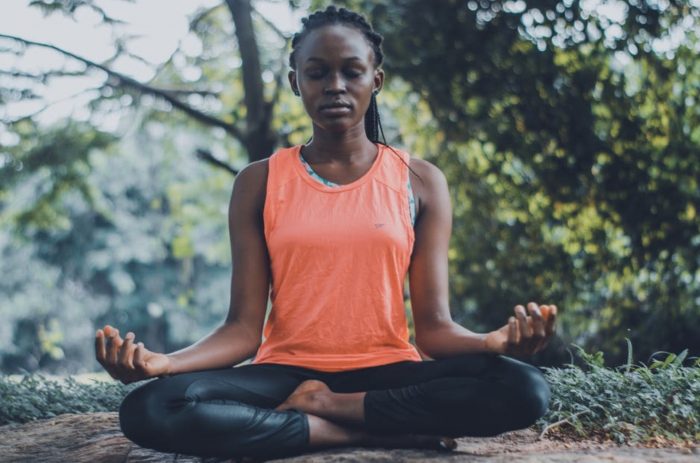It’s no secret that the American yoga world is plagued by social justice issues.
Namely, there is a distinct ethical issue with taking a practice of people of color and then excluding them from that practice unless they fit the mold that white yogis have created. That mold is white, thin, young, and with ample disposable income.
One silver lining of 2020 is that such issues are now in the forefront of the yoga world and are receiving attention. Creating lasting change, however, has to happen at all levels of the system: yoga media, studios, instructors, practitioners, and everything in between.
The ideas presented here are for yoga studios. They don’t directly cost the studios money, yet many can directly increase the client base—a clear benefit to studios. Sure, adding classes costs money, but I don’t consider this to be additional money since a studio needs classes on their schedule anyway.
These seven ideas address inclusion in various forms, and though this list isn’t a panacea, it’s a start.
1. Implement a dress code for instructors.
If the outfits the instructors wear retail for over $100, they shouldn’t be teaching in them. A common rebuttal is, “But with the expensive brands the factory workers are treated better.” In my opinion, this is often an attempt to justify a desire, but it doesn’t have basis in fact. Target, for example, employs people whose job it is to specifically visit overseas factories and make sure the working conditions are ethical. It’s fine to wear more expensive brands that you like but just not while teaching.
Expensive outfits promote a vision of a yogi that is, at best, entirely inaccurate, and, at worst, highly exclusionary. The subtle messaging, whether we want to see it or not, is, “If you don’t dress like this, you don’t belong.” A dress code is also an easy way to promote logo wear for your studio.
2. Offer special populations classes.
Studios routinely offer broga classes to attract men to studios and help them feel welcome. Why not do that with other special populations? I know of one studio that created popular Big A** Yoga classes in an effort to welcome larger body types into the yoga space. Black Girl Magic classes could be a similar entry point for hesitant BIPOC looking for a yoga home.
3. Purposely seek out diverse instructors.
Representation matters. Studio managers/owners should make a conscious effort to include instructors of varying ages, body types, ethnicities, and gender. When looking specifically for BIPOC instructors, don’t reach out to places largely populated by skinny white woman to find new staff. Instead, reach out to area BIPOC groups. In other words, instead of telling teacher training programs, “We’re looking for BIPOC graduates,” reach out to BIPOC groups in the area and say, “We’re looking for yoga instructors.”
4. Go to where the target population is; don’t make the target population come to you.
Geography plays an invisible role in exclusion. Just because studios exist doesn’t mean students are comfortable attending in that particular geographic setting. Send instructors to do on location, donation-based classes in areas populated by groups you’re trying to include. The instructors may make more money than at your studio, the studio gets brand awareness, and the students get affordable access to yoga in an environment where they feel welcome and safe.
5. Host donation-based specialty classes.
A headstand workshop. 108 Sun Salutations. A one-off 90-minute class. The possibilities of specialty classes are endless. Students give a donation to attend, and the studio gives the (tax-deductible) proceeds to a cause that benefits a marginalized population. Many instructors have causes they’re passionate about and would be happy to donate time once a year, for example, to such a cause.
6. Diversity and inclusion requirements for staff.
As with most of the business world, diversity and inclusion work could be required in the employment contract. Alternatively, it could be tied to raises (e.g., you aren’t eligible for a yearly raise unless you participate). For example, instructors could choose to participate in a book, podcast, or article-study group with co-workers—a private Facebook group is a great medium for this—or take a continuing education class by a teacher of color—free classes are available with Yoga Alliance.
7. Build an inclusive menu of classes.
If you’re not a style-based studio, this is a simpler task. If you’re a style-based studio, consider ways to diversify your schedule. For example, a Vinyasa-based studio can easily fall into the trap of catering to the young and fit. But you could easily open options up—while still maintaining your Vinyasa base—by offering Slow Flow, Vinyasa 1 (a set sequence), Vinyasa 2 (free form), heated, non-heated, and beginning Vinyasa. Offering a variety not only says all are welcome here, but it also increases your potential student base—thus increasing revenue.
If you’re a studio owner, which of these ideas could you implement first? If you’re a student, present these ideas—and add your own—to studio owners. Stress that, as a patron of their business, you want to see a positive change.
Building a more inclusive yoga world takes effort from everyone, but small steps are available for the taking. Let’s start today.
~









Read 4 comments and reply